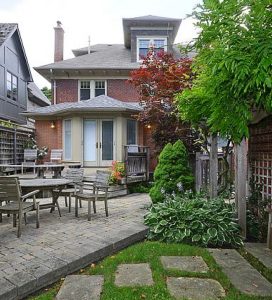With over 30 years of successful selling experience, I have honed my ability to view homes through the lens of a potential buyer and know which important details will add value when preparing your home for sale. Buyers place a great deal of emphasis on a property’s presentation and although cosmetic issues may not represent a poorly maintained home, positive first impressions are paramount.
How to Prepare Your Home to Sell Successfully?
Here are a few of my suggestions for things to do before putting your house on the market:

Curb Appeal
- Landscaping – Weed and mow the lawn, trim shrubs and remove dead tree limbs or other yard debris. Remove clutter such as toys and gardening equipment and consider brightening up the garden with fresh flowers.
- House Exterior – Ensure outside lights and doorbells are working. Touch up any peeling paint on doors, siding, or trim, and clean the outside of windows and repair torn screens. Fix damaged roof shingles and flashing and clear gutters and downspouts.
- Surrounding Areas – Repair and paint your fences, porches or decks. Declutter and tidy your garage and shed. Make sure the driveway and sidewalk are clear of debris and, if icy, apply salt.
Inside Your Home
Here are some inexpensive home upgrades when preparing your home for sale:
- Ambience – Overall, every room should look spacious, bright, and inviting. Arrange the furniture to make the rooms appear as large as possible, turn on all the lights and open all drapes and blinds to let in natural light. Turn off the TV and play soft music. In addition, the smell of fresh bread or cookies can invoke a “homey feeling” in people who are viewing your home.
- Throughout – Odour is very important: air out fabrics and ensure surfaces are freshly cleaned (not just sprayed), shampoo the carpets, and polish the floors. Wash the walls, ceilings, and trims. Tighten any loose doorknobs and stair bannisters, repair squeaky floorboards, and loosen tight doors and windows. Purchasing new vent and outlet covers can be worth the minor investment.
- Washrooms – Clean and repair caulking around tubs and sinks, fix leaky faucets and remove water stains. Make sure your toilet bowls are spotless and mirror sparkling. Tighten towel rods and hang decorative towels on them. Consider purchasing new shower curtains and bath mats.
- Closets – Declutter and organize your closets and place an air freshener inside. Limit the number of items stored overhead or on the floor to make the spaces seem larger.
- Kitchens – Remove grease from the oven, stove top, and range hood, and replace burner pans on the stove. Clean out kitchen cabinets and remove clutter from countertops to increase the counter space available.
- Basements and Attics – Large storage areas are always desirable to potential buyers, so make sure they are cleaned, decluttered, and organized as best as possible. Consider storing items at a friend’s house, or in a storage pod if you have a lot of possessions.
Renovations
Along with the cosmetic changes listed above, renovations will increase your property’s value. According to Canadian surveys, the top three renovations that provide the best return on investment are washrooms (75-100% return), kitchens (75-100% return), and interior and exterior painting (50-100% return). However, do keep in mind that some buyers do prefer to customize their homes and are looking for blank canvases to work with.
The following are my top recommendations for other home improvement tips and the likely return on investment:
- Replacing roof shingles (50% to 80%)
- Replacing the furnace and heating system (50% to 80%)
- Renovating the basement (50% to 75%)
- Adding a recreation room (50% to 75%)
- Installing a fireplace (50% to 75%)
- Up-grading floors (50% to 75%)
- Building a garage (50% to 75%)
- Replacing windows and doors (50% to 75%)
- Building a deck (50% to 75%)
- Installing central air conditioning (25% to 75%)
Decluttering
If you have accumulated a lot of clutter over the years, consider renting storage space in which you can store some of your belongings during the sale of your home. Other options are to hold a yard sale or give to charities. Here are some valuable tips on decluttering your home and reducing your possessions so you can move with less.
Home Staging
Should you stage your home? There are several reasons to invest in home staging, which is the strategic placement of furniture and accessories to highlight your home’s unique features, minimize any faults, and appeal to a wider range of buyers. Staging a home greatly improves showability, therefore making it more likely to sell. It is difficult to translate this into a higher price, but the more interest you have in your home from the get-go, the more likely you are to get a better price for your home when selling.
Here are some reasons to consider home staging:
- If your home is very dated and you want to minimize unattractive areas.
- Your existing furniture detracts from the features of your home.
- If your home had tenants and the common areas are not well-maintained.
- Your home is vacant (empty rooms tend to appear smaller).
- For oddly shaped or smaller spaces, staging will showcase the space’s potential in ways the buyer may not think of.
If you require assistance in cleaning, repairs, home staging or other services in preparing your home for sale, I have relationships with some of Toronto’s most reputable businesses and I can recommend talented and reliable professionals to assist you.
Would you like to learn more about preparing your home for sale?
Please call me at 416-402-0787, complete the form or email me to get in touch directly.
